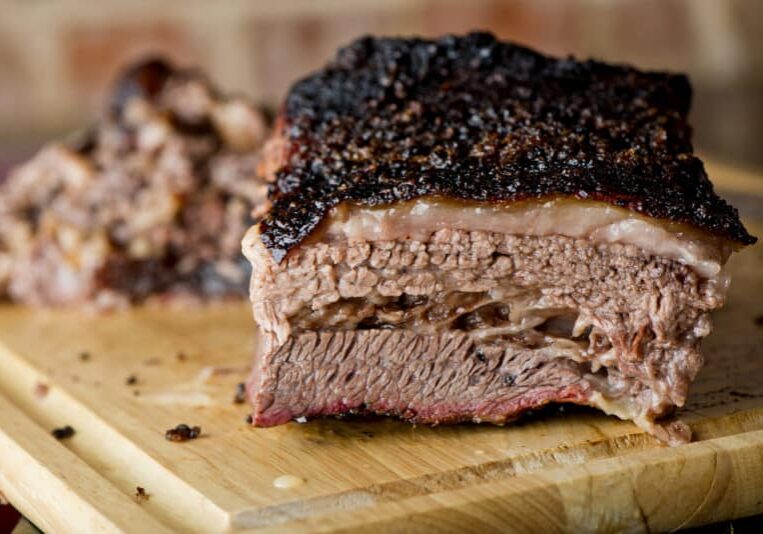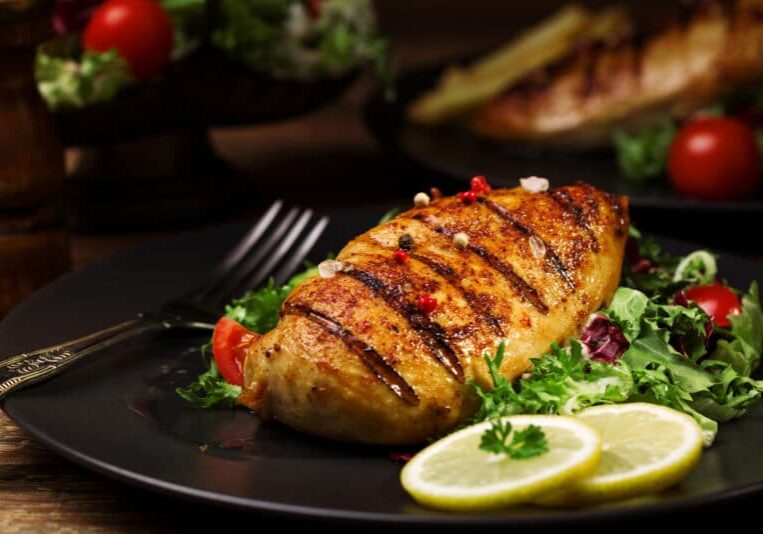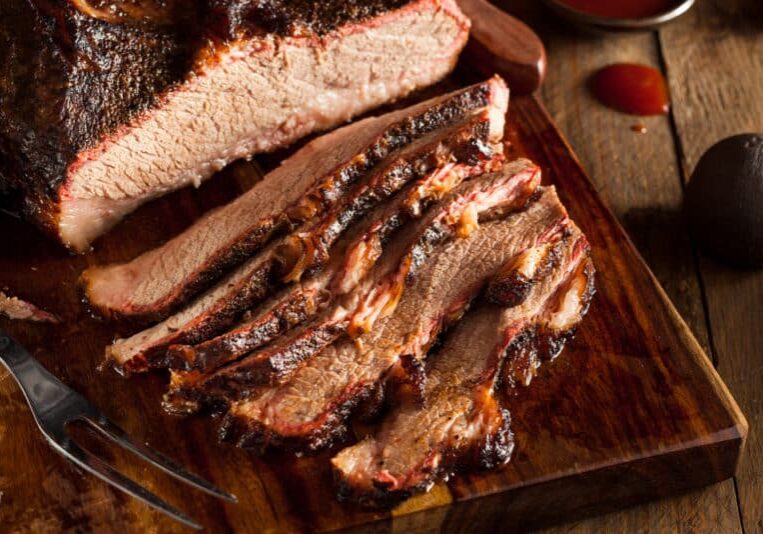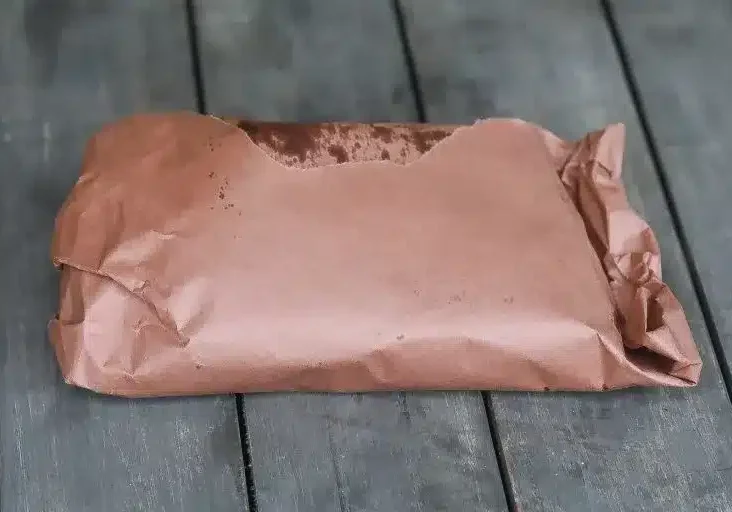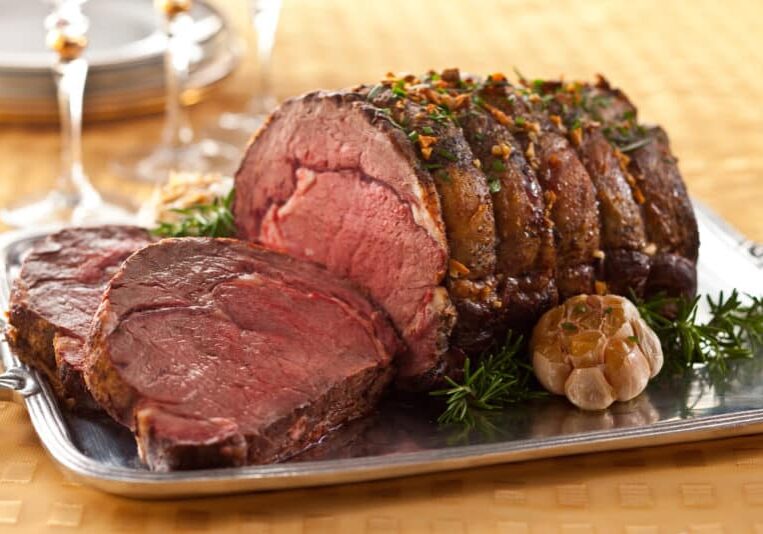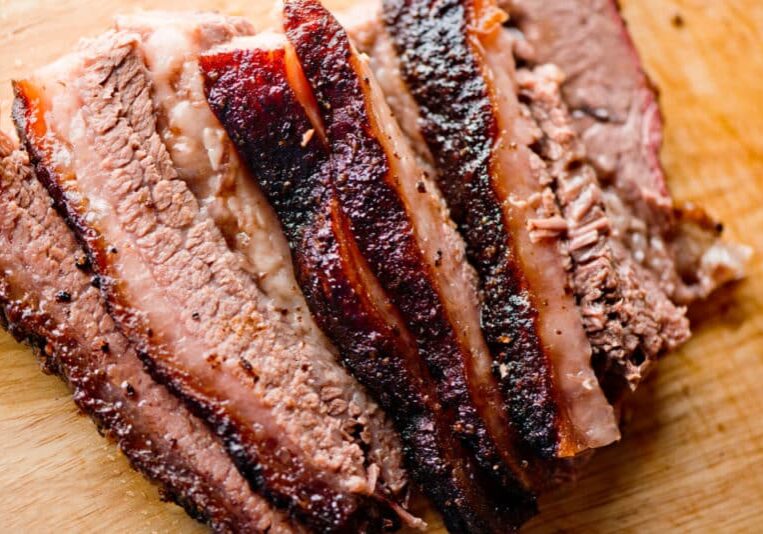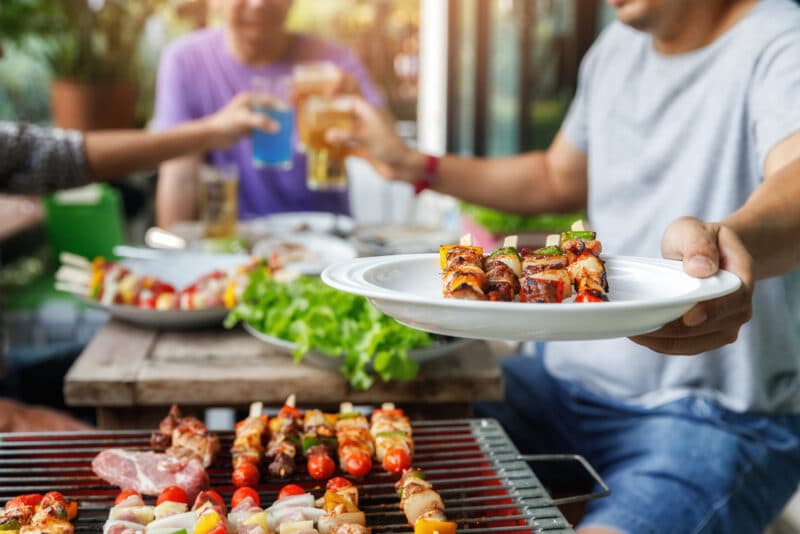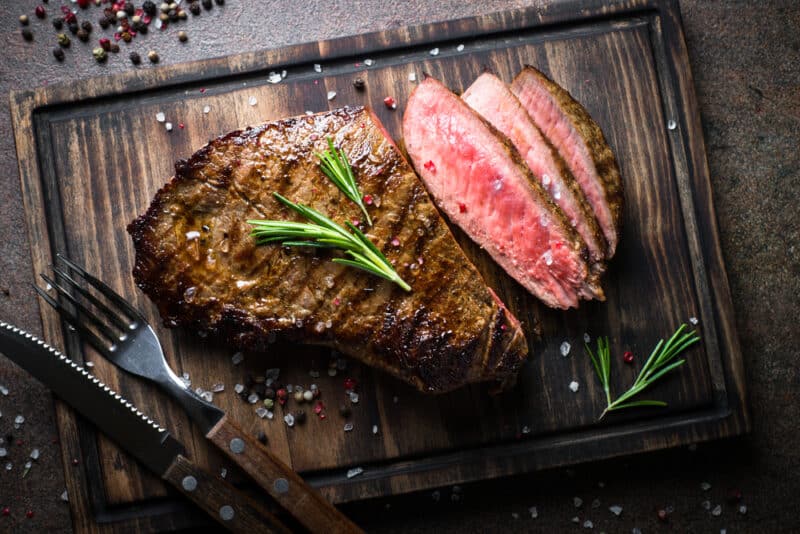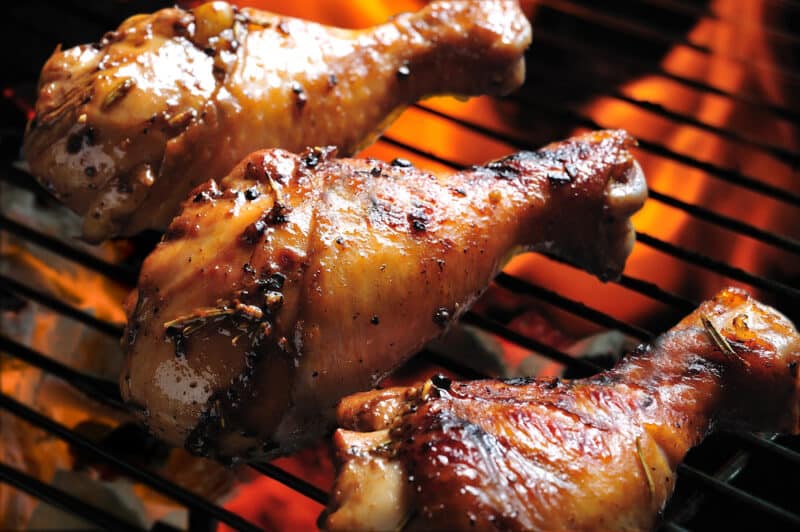How to Keep a Charcoal Grill Lit: Proven Tips for Steady Heat
TheGrillingMaster.com is reader-supported. If you buy something using the links on our site, we might earn an affiliate commission at no added cost to you. This helps us pay our staff to keep making awesome content for you!
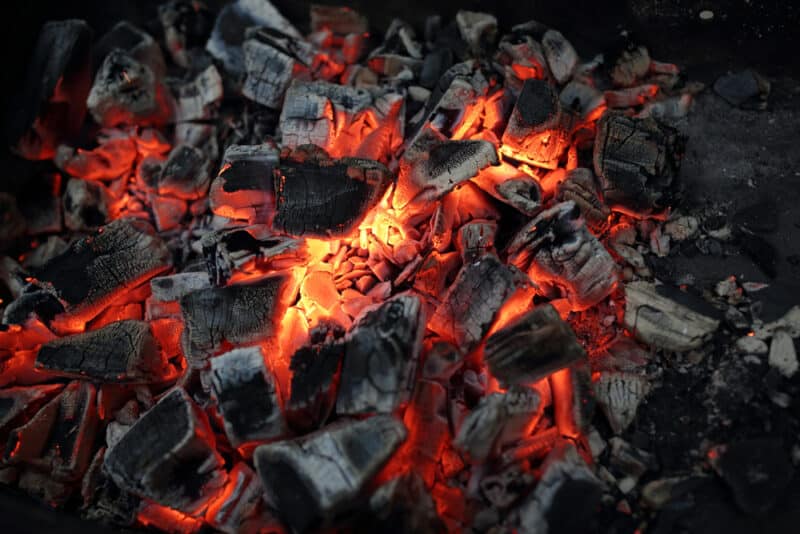
Ever find yourself scratching your head, trying to keep those charcoals glowing just right on the grill? Trust me, it’s a puzzle many of us have wrangled with while dreaming of that perfect sear.
Considering 60% of U.S. adults are hooked on the rich flavors that only charcoal grilling can provide, getting the hang of tending those flames is practically a backyard art form. Fret not; I’ve got you covered with my down-to-earth guide brimming with handy tips to help you maintain an even burn and steady heat throughout your cookout.
Gear up for some serious grilling triumphs!
Key Takeaways
- Add fresh charcoals and wood chunks every hour during long grilling sessions to keep the fire going and maintain consistent heat for even cooking.
- Use a charcoal chimney starter for quick ignition of coals without lighter fluid, which can impact food flavor.
- Create a 2 – zone grill by stacking charcoals to one side, providing both hot direct heat and cool indirect heat zones on your grill.
- Regularly monitor the temperature with a probe and adjust vents as needed to control airflow and maintain desired heat levels inside the grill.
- Follow proper safety precautions by wearing protective gear, keeping fire extinguishers close by, storing flammable materials safely, and disposing of ashes correctly after they’ve cooled.
Best Practices for Starting and Maintaining a Charcoal Grill
When it comes to starting and maintaining a charcoal grill, there are several best practices to keep in mind. From gathering the necessary supplies and choosing the right charcoal, to using a charcoal chimney for quick ignition and adding wood chips for extra flavor, these tips will ensure that your grill stays lit and provides steady heat throughout your cooking process.
Gathering necessary supplies
Before lighting my charcoal grill, I make sure to gather all the essential supplies. This preparation ensures a smooth and successful grilling experience from start to finish.
- A bag of high-quality charcoal briquettes: These provide a consistent burn and are crucial for maintaining steady heat throughout the cooking process.
- Charcoal chimney starter: It offers an easy and efficient way to light charcoal without lighter fluid, reducing the risk of unpleasant flavors in the food.
- Newspaper or lighter cubes: They help ignite the coals in the chimney starter. I always keep them dry and handy.
- Long-handled lighter or matches: With these, I can safely ignite the newspaper or lighter cubes without getting too close to the flame.
- Heat-resistant gloves: They protect my hands when pouring hot charcoals into the grill or adjusting grills that are already lit.
- Grill tongs and spatula: Essential tools for handling food on the grill, they should be long enough to keep my hands away from the heat.
- Metal bucket for ash disposal: Proper ash management keeps my grill functioning correctly and helps prevent any potential fire hazard.
- Wood chips (if desired): These add extra flavor to whatever I’m grilling. Soaking them in water before use helps them last longer on the grill.
Choosing the right charcoal
When choosing the right charcoal for your grill, consider the two main types: briquettes and lump charcoal. Briquettes are made from compressed sawdust and additives, ensuring a consistent burn time and heat output.
Meanwhile, lump charcoal is pure wood that burns hotter and faster. Look for hardwood-based lump charcoals without fillers or chemicals for a clean, natural flavor in your grilling.
Opting for high-quality charcoal will enhance the overall taste of your grilled dishes.
To achieve optimal results when using different cooking methods such as direct grilling or smoking, select the appropriate charcoal type based on your needs. For direct grilling at high temperatures, lump charcoal might be more suitable due to its quick ignition and intense heat output.
Using a charcoal chimney
To light charcoal quickly and efficiently, I use a charcoal chimney. First, I fill the top chamber with charcoal, then place crumpled newspaper or paraffin cubes in the bottom chamber and light them.
As the paper burns, it ignites the coals from below, creating a strong heat source that evenly lights all of them. Once the coals are ashed over – usually within 15-20 minutes –I carefully pour them into the grill for even heating.
For safety purposes when using a charcoal chimney, always handle it with heat-resistant gloves to avoid burns. Additionally, ensure that your workspace is clear from any flammable items during this process for added safety measures.
Adding wood chips for flavor
I add wood chips to my charcoal grill to infuse a smoky flavor into the food. I soak the wood chips in water for about 30 minutes before adding them to the coals. Once they are soaked, I sprinkle the wet wood chips over the hot coals, and then cover the grill with its lid to let the smoke flavor enhance my grilled dishes.
To ensure a continuous infusion of smoky flavor, I sometimes add more soaked wood chips during grilling. This technique adds depth and richness to meats, vegetables, and even desserts cooked on my charcoal grill.
Proper ash management
After grilling, carefully remove the ashes once they are completely cool. Brush any remaining ash from the grill’s bottom and dispose of it in a metal container. Store this container in a secure location, away from combustible materials or structures.
Regularly cleaning out the ash prevents airflow restriction and ensures proper heat circulation for your next grilling session.
Proper management of grill ash also reduces the risk of fire hazards caused by hot coals igniting nearby flammable items. It helps maintain better control over your charcoal grill’s temperature, resulting in more consistent heat for your barbecuing needs.
Tips for grilling in cold weather
Grilling in cold weather requires some extra attention. I recommend giving your charcoal grill extra time to warm up, at least 20-30 minutes longer than usual. The cold temperature will slow down the process of reaching the desired heat level, so be patient and plan accordingly.
It’s also helpful to use a windscreen or barrier to protect the grill from gusts of wind that can impact its performance.
When grilling in cold weather, keeping an eye on the airflow is crucial. Adjusting the vents more frequently and slightly opening them wider can help maintain a consistent temperature inside the grill despite chilly conditions.
Troubleshooting Common Issues with Charcoal Grills
If you’re having trouble keeping your charcoal grill lit, there are a few common issues that could be causing the problem. From understanding why charcoal grills go out to starting a charcoal grill with lighter fluid, I’ll provide you with practical solutions to keep your grill burning steady.
https://www.youtube.com/watch?v=7PGVvqYgwqQ
Why charcoal grills go out and how to fix it
Charcoal grills can go out due to a lack of oxygen flow, causing the charcoal to smolder and lose heat. To fix this, check the vents for blockages and open them up if necessary. Another reason is an excessive build-up of ash, which can smother the coals.
To remedy this, remove excess ash from the grill before cooking. Additionally, wind or drafts can extinguish charcoal grills – consider using a windbreak or moving the grill to a more sheltered location.
Next time you encounter your charcoal grill going out, remember to first check for airflow blockages and clear any obstructions in the vents. Also, ensure that there isn’t too much ash build-up that may be smothering the coals.
Finally, take into account environmental factors such as windy conditions that could be affecting your grill’s performance.
How to start a charcoal grill with lighter fluid
Starting a charcoal grill with lighter fluid is a simple process that requires attention to safety and efficiency. Here’s how it’s done:
- Place the charcoal in a mound or pyramid shape on the grill grate.
- Carefully drizzle lighter fluid over the coals, ensuring an even distribution but avoiding over – saturation.
- Let the lighter fluid soak into the charcoal for about 30 seconds before lighting it with a long – handled lighter or match.
- Allow the coals to burn until they are covered with gray ash, indicating they are ready for cooking.
- Once lit, keep watch over the grill and adjust airflow as needed to maintain a steady cooking temperature.
Monitoring temperature and maintaining heat
To monitor the temperature and maintain heat on a charcoal grill, I:
- Use a quality grill thermometer to keep track of the internal temperature accurately.
- Adjust air vents to control the airflow and regulate the heat level inside the grill.
- Position the grill lid to help retain consistent heat and prevent sudden fluctuations.
- Rotate or flip food regularly to ensure even cooking and prevent hot spots on the grill’s surface.
- Add charcoal as needed to maintain a steady heat level throughout the grilling process.
- Monitor weather conditions, such as wind or rain, which can affect the grill’s temperature, and make adjustments accordingly.
- Keep an eye on the color and consistency of smoke produced by the charcoal to gauge heat levels and adjust as necessary.
Safety Tips for Using a Charcoal Grill
Always store charcoal and lighter fluid in a dry, cool place away from heat sources. Make sure to dispose of ashes properly and safely to prevent fire hazards. To learn more about how to keep your charcoal grill lit and maintain steady heat, continue reading for expert tips and techniques.
Proper storage and disposal
Proper storage and disposal of charcoal and its byproducts are essential for safety and environmental reasons. Here’s a guide to ensure safe and responsible charcoal management:
- Store charcoal in a cool, dry place away from direct sunlight or moisture to avoid spontaneous combustion.
- Keep the charcoal bag tightly closed to prevent exposure to air and humidity, which can degrade the quality of the charcoal.
- Dispose of ashes only after ensuring they are completely cooled, preferably in a metal container with a tight-fitting lid.
- Once cold, transfer ashes to a non – combustible container and seal it before discarding them in a designated ash receptacle or trash bin.
- Avoid disposing of ashes near flammable materials or in areas susceptible to wildfires.
- Always follow local regulations for proper disposal methods of used charcoal and ash to prevent environmental harm.
Handling flammable materials safely
When handling flammable materials, always wear protective clothing such as heat-resistant gloves and aprons. Use long-handled utensils to keep a safe distance from the flames and hot surfaces.
Store charcoal, lighter fluid, and other flammable items in a cool, dry place away from direct sunlight to minimize fire risk.
Always keep a fully charged fire extinguisher nearby when grilling to quickly address any unexpected flare-ups or accidents. Check for leaks in gas lines or propane tanks before use and never store them indoors or near ignition sources.
Using appropriate tools and clothing
I always wear heat-resistant gloves and use long-handled tongs when working with a charcoal grill. A sturdy apron protects my clothing from grease splatters, while a quality meat thermometer ensures that the food is cooked thoroughly but not overdone.
Wearing protective gear and using the right tools are essential for safe and efficient grilling. Always prioritize safety by donning appropriate clothing and employing the necessary equipment to handle hot coals and food.
Now let’s dive into adding charcoals and wood chunks for maintaining steady heat on your grill.
Keeping fire extinguishers handy
I always keep a fire extinguisher within reach whenever I’m grilling. It’s important to have one on hand in case of an emergency. Being prepared for any unexpected flare-ups or accidents is crucial for ensuring the safety of yourself, your family, and your property.
A fire extinguisher can quickly and effectively tackle small fires before they escalate, giving you peace of mind while cooking with charcoal or wood.
To avoid any delays when dealing with potential grill fires, it’s paramount to have a fully charged and well-maintained fire extinguisher nearby at all times while grilling. Remembering this simple step can make a significant difference in preventing minor incidents from turning into major disasters.
How to Keep a Charcoal Grill Lit and Hot
To keep a charcoal grill lit and hot, it’s important to add charcoals and wood chunks as needed, utilize a temperature probe to monitor heat, create 2-zone grilling for different cooking temperatures, and use a heat baffle to control airflow.
These techniques will help you maintain steady heat for the perfect grilling experience.
Adding charcoals and wood chunks
To maintain a steady heat on my charcoal grill, I add fresh charcoals and wood chunks every hour during long grilling sessions. This keeps the fire going and maintains consistent heat for even cooking.
Just a handful of new charcoals and a couple of wood chunks each time does the trick to keep the grill lit and provide that smoky flavor to my food.
When adding charcoals or wood chunks, I ensure they are evenly distributed over the hot coals to avoid creating hot spots on the grill. By maintaining this routine, I can enjoy hours of uninterrupted grilling without having to worry about fluctuating temperatures.
Using a temperature probe
When grilling, it’s important to monitor the temperature of your charcoal grill to ensure consistent heat. Using a temperature probe allows you to accurately gauge the internal temperature of your grill, helping you adjust and maintain the desired heat level for optimal cooking.
This tool is essential for achieving perfect doneness in meats and ensuring even cooking throughout your grilling session. By regularly checking the grill’s temperature with a probe, you can make precise adjustments to keep the heat steady and achieve delicious results every time.
Creating 2-zone grilling
To create 2-zone grilling, I divide the charcoal into two piles on one side of the grill, leaving the other side empty. By doing this, I can have a hot direct heat zone for searing and a cooler indirect heat zone for slower cooking or keeping food warm without overcooking.
This technique allows me to adjust the temperature easily by moving food between the hot and cool zones as needed. It’s perfect for cooking different types of food at once or preventing flare-ups while still achieving that perfect char.
By mastering 2-zone grilling, you can cook diverse foods simultaneously with precision control over heat levels. This method enhances your grilling experience and opens up endless possibilities for creating delicious meals on your charcoal grill.
Utilizing a heat baffle
To distribute heat evenly and maintain consistent temperatures across the grill, I position a heat baffle on one side of the charcoal grate. This effectively redirects the flames and prevents direct heat from reaching the food.
By doing so, it creates an indirect grilling zone that allows for slower, more controlled cooking, perfect for larger cuts of meat or delicate foods like fish. Additionally, this technique helps to minimize flare-ups while still infusing smoky flavors into your dishes.
Placing a heat baffle in my grill setup has proven to be an essential method for achieving optimal results when slow-cooking or smoking foods. It ensures that every part of the grill receives uniform heat, making it easier to cook various types of food simultaneously without worrying about hot spots or uneven cooking.
Expert Tips and Delicious Recipes
Stack your charcoals for even heat distribution and longer burning time. Use the right type of charcoal and dry wood to create a clean, consistent heat source. Master your grill’s vents for precise temperature control, and keep your grill clean to ensure optimal performance.
Plus, check out our delicious recipes for some mouthwatering meals on the grill!
Stack your charcoals
Arrange your charcoals in a pyramid shape. Light them from the bottom, and let the flames burn upward. As they start to ash over, spread them out evenly using long-handled tongs.
Ensure that airflow is not obstructed by loosely stacking the charcoal. This method helps the coals light more quickly and evenly, providing consistent heat for your grilling needs.
Use the right type of charcoal and dry wood
Selecting the appropriate charcoal is crucial for maintaining a steady heat on your grill. Look for high-quality briquettes or lump charcoal to ensure consistent burning and even heat distribution.
Avoid using lighter fluid-infused charcoals, as they can impart unwanted flavors onto your food. Additionally, opt for dry wood chunks or chips to add smoky flavor to your grilling without causing flare-ups or excessive smoke.
When grilling with charcoal, it’s important to use the right type of fuel to achieve optimal results. High-quality charcoal and dry wood will provide steady heat and flavorful results without compromising the taste of your food.
Mastering your grill’s vents
After ensuring you have the right type of charcoal and dry wood, mastering your grill’s vents is crucial for controlling the temperature inside your grill. Adjusting the vents allows you to regulate airflow, which directly impacts the intensity of the fire.
Opening the vents increases oxygen flow, resulting in hotter flames, while closing them reduces heat by limiting airflow. It’s essential to monitor and adjust the vents throughout grilling to maintain a consistent cooking temperature and achieve perfect results every time.
When properly utilized, mastering your grill’s vents gives you precise control over the cooking environment within your charcoal grill. Whether you need to quickly increase heat or slow down cooking, understanding how to manage your grill’s ventilation system empowers you with greater flexibility and precision as a charcoal griller.
Keeping your grill clean
To keep your grill clean, I regularly scrape the grates with a stiff wire brush before and after every use. This prevents food buildup and ensures even heat distribution. After each use, I also remove ash from the bottom of the grill to prevent clogging and maintain proper airflow.
Another important aspect of keeping my grill clean is to wipe down the exterior with warm soapy water and a sponge. This helps in preventing grease buildup that could lead to flare-ups during future grilling sessions.
I also make sure to cover my grill when it’s not in use, protecting it from dust, dirt, and other environmental factors that can affect its performance over time.
Delicious recipes for your charcoal grill.
I grill a variety of meats and vegetables on my charcoal grill, such as juicy burgers, tender steaks, and flavorful kabobs. For a mouthwatering main course, I marinate thick-cut pork chops in a tangy barbecue sauce overnight and then cook them over medium-high heat until they’re caramelized on the outside but still moist inside.
As sides, I love to char-grill sweet corn on the cob and colorful bell peppers for an extra smoky flavor. Another favorite recipe is grilled pineapple with a sprinkle of brown sugar for dessert – it’s an easy yet delightful treat!
To enhance your grilling experience further, try using different wood chips or chunks to infuse unique flavors into your dishes. Experiment with hickory for a rich smoked taste in ribs or applewood for a delicate sweetness when grilling chicken.
Conclusion
In conclusion, maintaining a consistent heat on your charcoal grill is crucial for successful grilling. Adding charcoals and wood chunks as needed can help keep the fire going strong.
Utilizing a temperature probe will allow you to monitor heat levels accurately. Creating 2-zone grilling gives you flexibility in managing different cooking temperatures. And don’t forget to use a heat baffle for more even heat distribution across the grill surface.
With these tips, you’ll be able to keep your charcoal grill lit and maintain steady heat for all your grilling adventures!
FAQs
1. What are some proven tips to keep my charcoal grill lit?
To maintain steady grill heat, make sure you use proper charcoal grilling techniques like arranging coals evenly and keeping the lid closed to avoid windy conditions from putting out the fire.
2. How can I light a charcoal grill without lighter fluid?
Lighting a charcoal grill without lighter fluid is safer and can be done by using a chimney starter filled with charcoal, which keeps your grilling with charcoal techniques environmentally friendly and food tasting great.
3. Why does my charcoal grill lose heat and how do I fix it?
Your grill might lose heat if there’s not enough airflow or too much ash buildup; maintaining steady heat involves adjusting vents for good air circulation and cleaning out old ashes regularly for effective fire maintenance.
4. Can I still cook on my charcoal grill in different weather conditions?
Yes! For grilling with charcoal in different weather conditions, shield your barbecue from wind, control your grilling temperature closely, and protect hot coals from rain to keep your cooking consistent.
5. What should I do if my charcoal isn’t staying lit during long cooking sessions?
If you’re having trouble keeping a charcoal grill going for hours, add more coals periodically to maintain high temperatures, adjust your grilling temperature as needed, and manage the fire by distributing the heat evenly across the grate.
Learn More About Grilling
If you want to learn more about grilling, check out these other helpful resources!

Patrick Harvey
Patrick is a life long grilling enthusiast with an eye for product development and user experience. His expertise helps us test and review all of the products you see the website.
About The Grilling Master
Hi there, I'm Kevin Turner, Founder and CEO of thegrillingmaster.com.
My passion has always been grilling, smoking and BBQ delicious meats that satisfy my inner carnivore!
I started this website to share my passion and knowledge with you, the hungry reader who wants to prepare the perfect meal.
You can leverage my years of experience as a pit master and professional.
Send me a message and let's connect on Twitter here.


